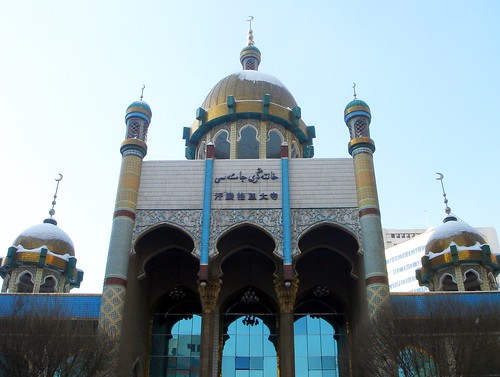Lugares de interés (POIs) del Mapa
0: Hui (Chinese) Islam
Approximate region of China's Muslim Hui population
Más sobre Hui (Chinese) Islam
1: Dongxian (Chinese) Islam
Region of Donxian Chinese Muslim minority.
Más sobre Dongxian (Chinese) Islam
2: Salar (Chinese) Islam
Approximate region of the Salar Muslims of China.
Más sobre Salar (Chinese) Islam
3: East Turkestan/Xinjiang (Chinese) Islam
Region of Uyghur Muslim population in China.
Más sobre East Turkestan/Xinjiang (Chinese) Islam
4: Dungan Islam
The approximate region containing the Dungan Muslim population of Kyrgyzstan and Kazakhstan
Más sobre Dungan Islam
7: Tajik Islam
The region of Tajikistan which contains most of the country's Muslim popluation.
Más sobre Tajik Islam
10: Huaisheng Mosque
"It is believed that Islam began in China during the Caliphate of Uthman ibn Affan, the third Caliph of Islam. The Caliph sent a deputation to China in 29 AH (650 CE, eighteen years after the death of the Prophet Muhammad (peace be upon him)... To show his admiration for Islam the Emperor ordered the establishment of China's first Mosque. The magnificent Canton Mosque is known to this day as the 'memorial mosque' and it still stands after fourteen centuries.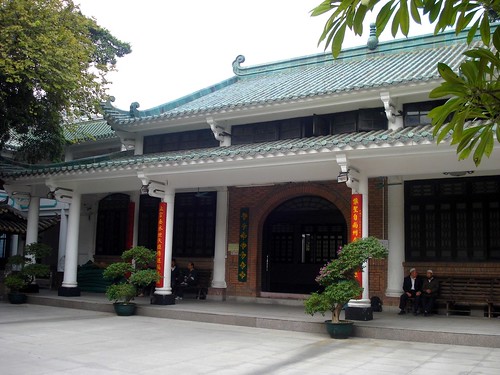
In Arab records there are only sparse records of the event, but there is a brief mention in the ancient records of the Tang dynasty. Chinese Muslims consider this event to mark the birth of Islam in China."(Text Source: BBC.com)
Más sobre Huaisheng Mosque
11: Chinese Islam Association
Created in April, 2001, this board of imams serves as the official Chinese interpreter of Islam and its laws. Its goal is partly to secure the rights of Muslims througout China and partly to prevent the spread of extremism.
(Source: BBC.com)
Más sobre Chinese Islam Association
12: Niujie Mosque
Ox St., Beijing. Built approx. 996AD.
In an attempt to integrate Islam into greater Chinese society, the minarets of the Niujie Mosque were built in a traditional Chinese architectural style.
Más sobre Niujie Mosque
13: The Hajj in China
Contrary to any historical governmental attempts to deny Chinese Muslims the right to go on the Hajj, 2007 saw a record number (10,700) of Chinese pilgrims.
(Source: Hajj Information Ministry)
Más sobre The Hajj in China
14: Great Mosque of Xi'an
Built 742AD. Currently serving over 60,000 Chinese Muslims in the greater Xian area.
"Unlike the mosques common to Arab countries, the Great Mosque of Xian has neither domes nor minarets. The style is almost wholly Chinese, except for the Arabic lettering and decorations that list the 99 names of God and verses from the Koran... Although there is no minaret, the "Introspection Tower", a two story pagoda, serves the same function."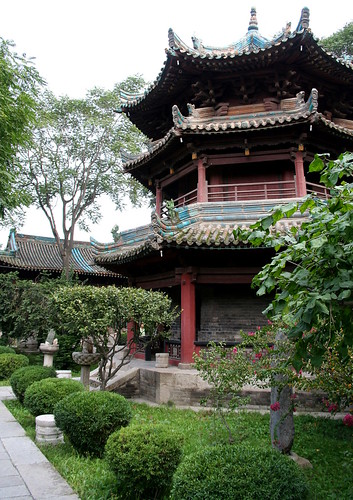
(Source: Oriental Architecture.com)
Más sobre Great Mosque of Xi'an
15: The Hui Chinese
The Huihui (the official term for Muslim Chinese who are not Uyghur) originated in Arab traders travelling the Silk Road who settled and intermingled with Han Chinese nationals. Though officially accepted by the Chinese government, Hui rejection of traditional Chinese culture (e.g. not eating pork) sometimes makes them suspect. (Source: Gladney, Dru C. "Muslim Chinese: Ethnic Nationalism in the People's Republic", pg. 11)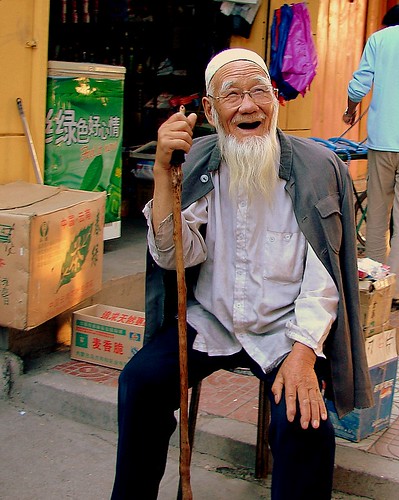
Más sobre The Hui Chinese
16: Hui Imams
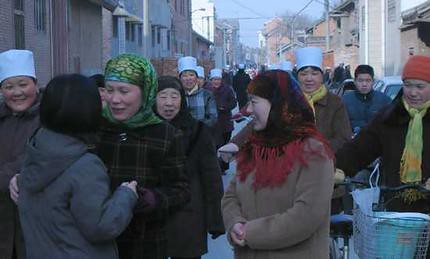
Hui Islam accepts female imams. Women's mosques can also be seen in China.
(Source: Photographer's caption.)
Más sobre Hui Imams
17: Dongxiang Chinese
Though culturally similar to their Hui neighbours, the Dongxiang descended from Mongol soldiers stationed in the Linxia area during the 13th c. They speak a dialect of Chinese closely related to Mongolian and the majority practice Sunni Islam.(Source: China.org.cn, Chinese government-run internet information portal.)
Más sobre Dongxiang Chinese
18: Lao Huasi Mosque
This Sufi mosque predominantly Middle Eastern architectural style, despite being in a region populated by Mongolian-decendent Hui Chinese.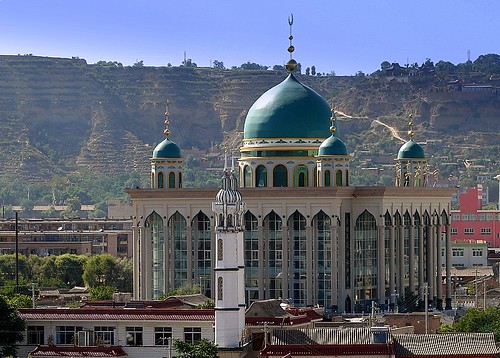
Más sobre Lao Huasi Mosque
19: Salar Chinese
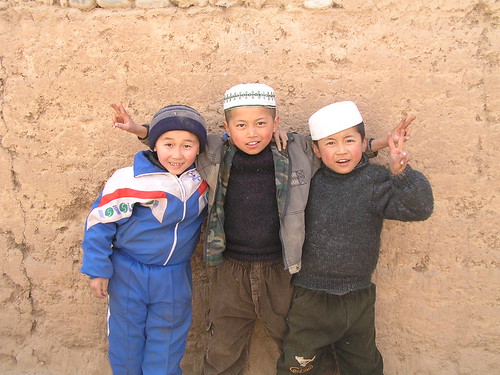
Culturally similar to Hui, the Salars are believed to have come from Samarkand during the 13th-14th c. Salars have their own language (Salar) which is Turkic in origin, but borrows from both Chinese and Tibetan.
"Women of the Salar ethnic minority in the past suffered tremendously under religious strictures and feudal ethics. Unmarried girls were not allowed to appear in public, while married women had to hide their faces in front of strange men. They had to turn their faces sideways when answering an inquiry and make a detour should they meet a strange man coming their way. But, in recent decades, Salar women have broken away from such practices and the traditional concept of men being superior to women is slowly disappearing. Salar women are now taking an active part in all local production endeavors."(Source: China.org.cn, Chinese government-run internet information portal.)
Más sobre Salar Chinese
20: The Uyghurs

"The Uigher had founded a kingdom in north-west Mongolia, and their military prowess kept the Tang emperors on their throne- at the price of much silk- before the Kyrgyz scattered them in the ninth century. Then they rode their shaggy ponies to the oases of the Tarim basin north of where I sat, their felt homes piled on carts and camels, and absorbed the ancient mélange of peoples settled there. In time, spreading, hey lost the eclectic Manichean religion which had clothed them with Perian art and dress, and they turned to Buddhism. Centuries later they became scribes and teachers to the Mongols of Genghis Khan, before converting to Islam."(Source: Thubron, Colin. Shadow of the Silk Road. Pg. 100-101.)
Más sobre The Uyghurs
21: Green Dome
The holiest Muslim site in China, the Green Dome is a place to which many Chinese muslims make a pilgrimage when travel to Mecca is forbidden by Chinese authorities.
According to legend, it was here that a band of Muslim missionaries escaped the wrath of the King of Turpan's soldiers when they miraculously turned into doves.
(Source:Photographer's caption.)
Más sobre Green Dome
22: Kuqa Mosque

In Xinjiang we see a departure from the pagoda-style architecture seen in Eastern Chinese mosques.
Más sobre Kuqa Mosque
24: East Turkestan Separatism
The Uyghurs of Xinjiang and various border-cities in Tibet, Kyrgyzstan and Kazakhstan have for centuries battled against Chinese control (similar to Tibetan freedom movements). (Source: Reuters article.)
Interestingly, when describing Xinjiang's brief period of independence in the 1930s and 40s, the Chinese government refers to its return to Chinese authority as its "liberation". (Source: China.org.cn, a Chinese government-sponsored information portal.)
Más sobre East Turkestan Separatism
25: The Dungan
The Dungan are a group of Uyghurs separated from Xinjiang during the 19th century.
"1. The first group, of some 1000 people, originally from Turfan in Xinjiang... reached Osh in southern Kyrgyzstan.
2. The second group, originally from Didaozhou (???) in Gansu... were settled in the spring of 1878 in the village of Yrdyk... in Eastern Kyrgyzstan. They numbered 1130 on arrival.
3. The third group, originally from Shaanxi... were settled in the village of Karakunuz (now Masanchi), in modern Zhambyl Province of Kazakhstan...This group numbered 3314 on arrival."
(Source: Rimsky-Korsakoff Dyer, Svetlana. Karakunuz: An Early Settlement of the Chinese Muslims in Russia, with an English translation of V.Tsibuzgin and A.Shmakov's work. Pages 243-279.)
The Dungan speak a language similar to Mandarin Chinese, but with fewer tones and written in a Cyrillic script. They practice Sunni Islam, likely spread to them by invading Mongols hordes.
Más sobre The Dungan
26: Dungan Mosque, Karakol
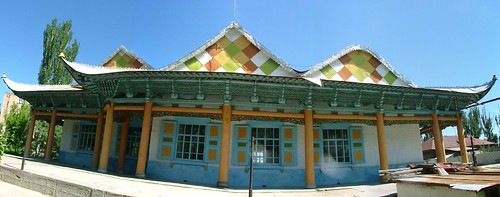
Oddly, the architecture seen at this mosque is more related to the pagoda style seen in Eastern China than the mosques of Xinjiang. It is possible that the political differences between East Turkestan and China have caused the Uyghurs to distance themselves artistically from the Chinese by making their mosques, a central part of their difference from the Han Chinese, radically foreign-looking. Outside of Xinjiang, the Dungan may not have so strongly rejected their previous interactions with Chinese culture.
Más sobre Dungan Mosque, Karakol
27: Milyanfan Mosque
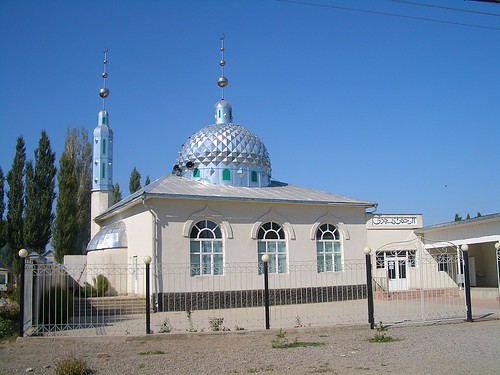
East of Bishkek, in the Chui Valley village of Milyanfan, this mosque shows a return to a more typical Central Asian style.
Más sobre Milyanfan Mosque
28: The Kyrgyz
The role of Islam in Kyrgyz society is almost entirely cultural, not religious. The first recognition of Muslims in Kyrgyzstan after the fall of the Soviet Union occurred in 1993, but even this opportunity for religious (Source: Everett-Heath, Tom. Central Asia. Pg. 123).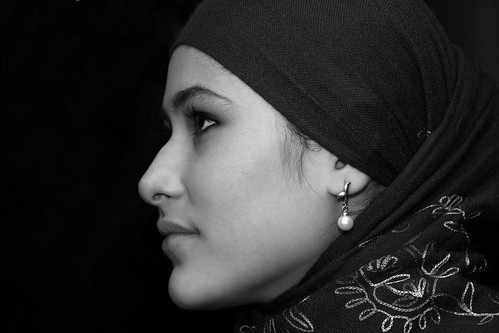
However, this is not to say that the Kyrgyz are completely detached from the religion. The period just following Kyrgyzstan's liberation from the USSR saw the building of thousands of mosques and a rise in the number of Kyrgyz studying classical Arabic. However, political action (e.g. terrorism) attached to Islam has made the religion a potentially dangerous label to attach to one's self.
(Source: Hangs, Reuel R. Central Asia. Pg. 35.
"It is common for women to wear a scarf both in the countryside and in urban settings when in public. Central Asian women in general do not wear the paranja (veil), and in Kyrgyzstan this is particularly rare; only in some of the more conservative regions of the south does one occasionally encounter women wearing the veil."
(Source: Hangs, Reuel R. Central Asia. Pg. 377-8.
Más sobre The Kyrgyz
29: Kyrgyz Mosques

Traditional Kyrgyz mosques have non-smooth domes, as seen above and below.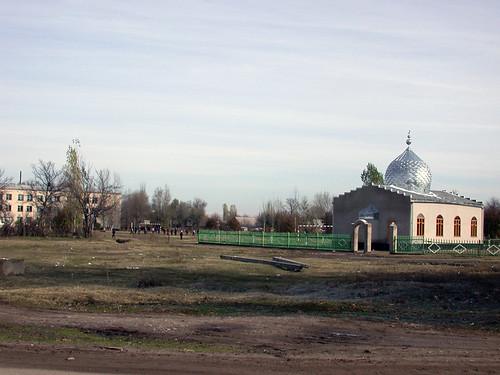
Más sobre Kyrgyz Mosques
30: Kyrgyz Government Involvement
""The Westernized and secular Kyrgyz élite understand little about Islam, but have felt obliged to promote the faith as part of the Kyrgyz heritage and have therefore appropriated Islamic symbols while preventing the manifestation of political Islam. Religious freedom and the secular nature of the state were proclaimed, and Islam has been utilised in a deliberate manner to promote Kyrgyz identity and legitimize authority. Islam is employed by the state as a political tool to boost national credentials and is hijacked, where appropriate, to buttress new state ideology. 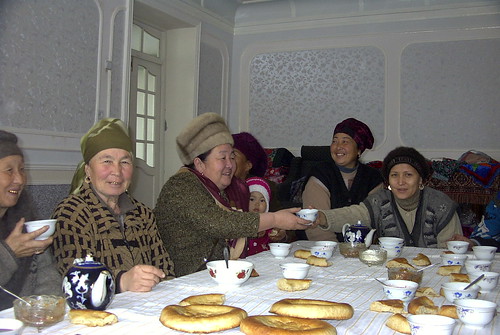
"[Kyrgyz President Askar] Akaev suggested that the new Kyrgyzstan should reflect the moral values of Islam, took his presidential oath of office on the Koran and made two traditional Islamic feasts national holidays. The Kyrgyz government has subsequently cultivated Islamic symbols, notably in supporting the construction of mosques and madra'sas and the refurbishment of holy places.However, Akaev has been less keen than other Central Asian leaders to cloak himself in Islam, except when it might produce economic gain. The superficial acceptance of Islam and its cynical use by Kyrgyz leaders was illustrated when the President joked he would perform the haj if it resulted in financial aid."
(Source: Everett-Heath, Tom. Central Asia. Pg. 122)
Más sobre Kyrgyz Government Involvement
31: Tengriism

In areas of Kyrgyzstan farther away from Osh (i.e. Northern Kyr.), Muslim practices are mixed with an older animist religion, Tengriism. (Source: IslamAwareness.net) Some might argue that this nullifies any Muslim practices, but it is possible that the Kyrgyz have intertwined the two beliefs to put Allah in place of the sky-deity, which would make other Tengri beliefs compatible with Islam.
Más sobre Tengriism
32: The Kazakhs
Traditionally Sunni (Hanafi).
While Islam is widely held to be a unifying cultural factor in Kazakhstan, "In terms of personal belief... about one quarter of all respondents in Kazakhstan said they were 'believers' and practiced Islam. Among these Muslim 'believers', however, knowledge or practice of the main pillars of Islam appeared weak... Two-thirds of Kazakhstan's 'Muslims' could not translate 'There is no God other than Allah and Mohommad is his prophet' form the Arabic, or they gave an incorrect translation. (Indeed close to 20 per cent of the small number of Kazakhstani respondents who said they were believing Muslims also said that they disagreed with this statement, which is a fundamental tenet of Islam!) In terms of rituals, over three-quarters of those Kazakhstanis who said they were Muslim believers do not pray at all..."
(Source: Ro'i, Yaacov. Muslim Eurasia. Pg. 57.)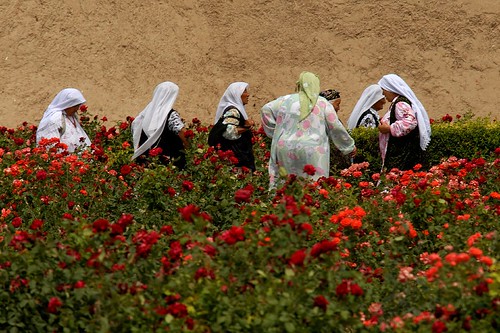
Más sobre The Kazakhs
34: The Tajiks

The majority of Tajiks practice Sunni Islam. The exception lies in the Pamir Mountains, where Ismailism is in the majority. Sufism is present predominantly in urban centers (such as the capital, Dushanbe).
"Long before the Soviet era, rural Central Asians, including inhabitants of what became Tajikistan, had access to their own holy places... Under Soviet regimes, Tajiks used the substantial remainder of this rural, popular Islam to continue at least some aspects of the teaching and practice of their faith after the activities of urban-based Islamic institutions were curtailed. "
"Islam also played a key political role for the regime in power in the early 1990s. The communist old guard evoked domestic and international fears that fundamentalist Muslims would destabilize the Tajikistani government when that message was expedient in fortifying the hard-liners' position against opposition forces in the civil war. However, the Nabiyev regime also was willing to represent itself as an ally of Iran's Islamic republic while depicting the Tajik opposition as unfaithful Muslims."
(Source: Library of Congress Country Studies: Tajikistan)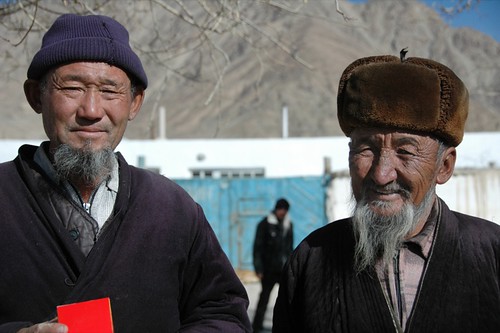
Más sobre The Tajiks
35: Government Bans
All Mosques are required to be registered with the Tajik government, and those which the government deems unfit or "dangerous" are forcibly closed (Source:
Más sobre Government Bans
36: Mosque

The size of space in this mosque is indicative of the number of Muslims in Tajikistan's capital, Dushanbe. The architecture seen is Central Asian with a somewhat Turkish style in its decoration.
Más sobre Mosque
37: The Uzbeks
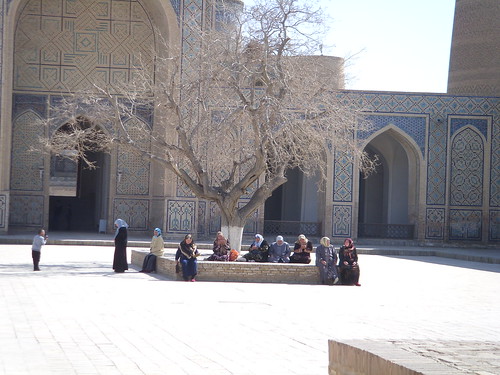
While Islam is the predominant religion in Uzbekistan, no branch has a greater representation than any other. Additionally, the religion in the Post-Soviet era seems to have taken a secular spin to the point where the religion is not spoken of as such, but instead a political faction.
Más sobre The Uzbeks
38: Muslim Board of Central Asia.
During the Soviet Era, Tashkent was home to the Muslim Board of Central Asia (abbreviated in Cyrillic as SADUM/?????).
"One of the changes that ensued was the establishment in 1943 of an officially sanctioned Islamic hierarchy for Central Asia, the Muslim Board of Central Asia. Together with three similar organizations for other regions of the Soviet Union having large Muslim populations, this administration was controlled by the Kremlin, which required loyalty from religious officials. Although its administrative personnel and structure were inadequate to serve the needs of the Muslim inhabitants of the region, the administration made possible the legal existence of some Islamic institutions, as well as the activities of religious functionaries, a small number of mosques, and religious instruction at two seminaries in Uzbekistan."
(Source: Library of Congress Country Studies: Tajikistan.)
Más sobre Muslim Board of Central Asia.
39: Gur-e Amir (Mausoleum)
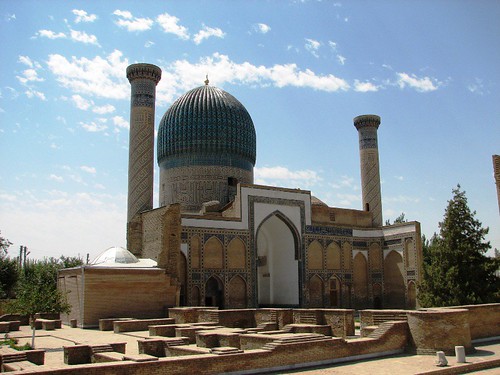
The Gur-e Amir, architectural precursor to Mughal tombs.
Más sobre Gur-e Amir (Mausoleum)
41: Andizhan Massacre, 2005

On May 13, 2005, Uzbek soldiers fired into a crowd of protesters in Andizhan. Casualties were estimated at over 1,000, and many were buried in mass graves. The protesters were marching for the freedom of 23 businessmen who had been tried for "extremism, fundamentalism and separatism" and accused of being members of an anti-govenment Islamist terrorist organization. A group of protesters broke into the jail where the businessmen were being held early on the morning of the 13th and took over a government building.
The following day, approximately 600 more were killed in attempts to leave Uzbekistan.
(Source: Wikipedia)
Más sobre Andizhan Massacre, 2005
42: The Tatars and Bashkirs
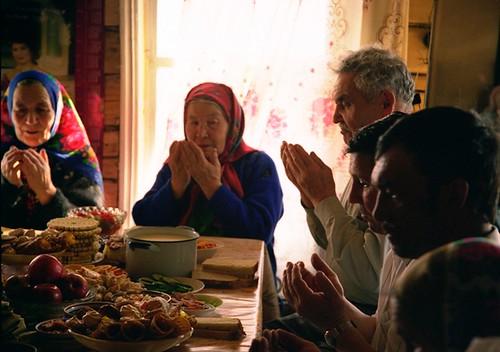
The Tatars and Bashkirs are two ethnic groups in Russia with (Sunni) Muslim majorities. Both groups speak their own Turkic languages (and both Tatar and Bashkir are closely related). However, young Russians from Tatarstan and Bashkorostan learn to speak Russian in school.
"The Bashkortostan Republic can be a model of the international consent and ethno-political stability... Representatives of more than 130 nationalities and peoples, which are adherents of various beliefs, live in the republic. The most influential religions in the republic are Islam and Orthodoxy. As of January 1, 2008 eight religious centres, 1313 religious associations of various beliefs operate in Bashkortostan Republic.
(Source: The Bashkorostan Republic official site).
The Voice of America reports that anti-Muslim violence within Russia is on the rise. It also makes the prediction that the Muslim population of Russia is growing at such a rate that the country "will have a Muslim majority [within our lifetimes] and even before that the growing number of people of Muslim background in Russia will have a profound impact on Russian foreign policy."
(Source: VOA News.)
Más sobre The Tatars and Bashkirs
43: Tatar Mosque, Kazan
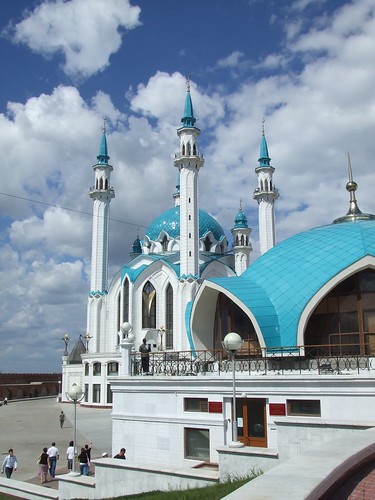
Tatarstan is one of the only states in Russia to have more mosques than Orthodox churches.
(Source: Photographer's caption.)
Más sobre Tatar Mosque, Kazan
44: The Hajj in Russia
In 2006, a record 18,000 Russian Muslims performed the Hajj.
(Source: Ministry of Hajj).
Más sobre The Hajj in Russia
